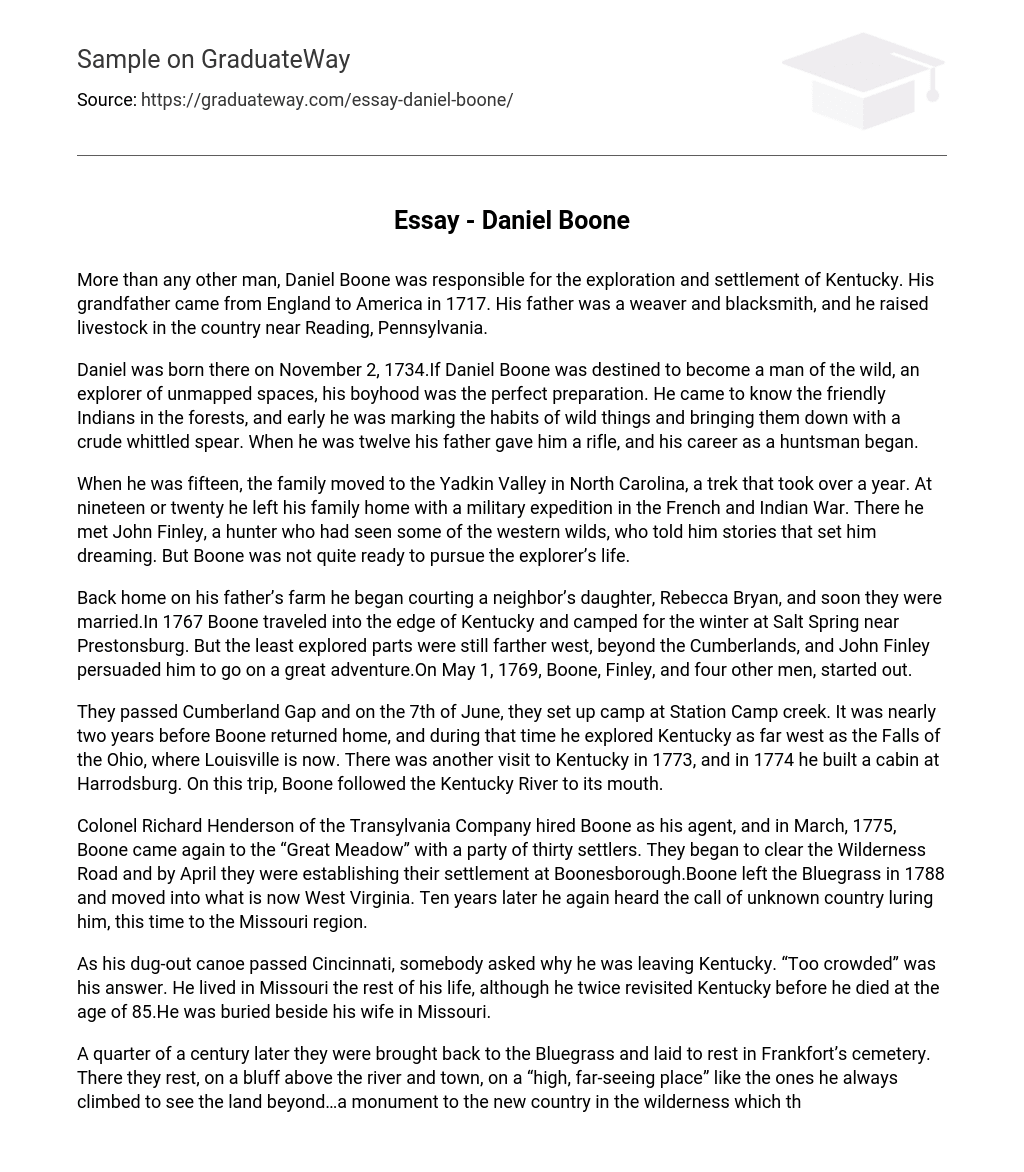Daniel Boone, surpassing any other individual, played a crucial role in the exploration and settling of Kentucky. His grandfather immigrated to America from England in 1717, while his father, a weaver and blacksmith, took care of livestock in the rural area around Reading, Pennsylvania.
Daniel was born on November 2, 1734 in the same place where he would later become a wilderness enthusiast and explorer of unexplored lands. His early years provided him with valuable experiences that prepared him for his future pursuits. He developed relationships with the indigenous Indians who lived in the woods and, from a young age, studied and acquired knowledge about the habits of wild animals while skillfully hunting them down using a primitive carved spear. At twelve years old, his father presented him with a rifle, which marked the start of his journey as a hunter.
Boone’s family moved to North Carolina’s Yadkin Valley when he was fifteen years old. The journey took them more than a year to complete. Around the age of nineteen or twenty, Boone left his family and joined a military expedition in the French and Indian War. During this time, he met John Finley, an explorer who had explored the western wilderness and told captivating stories that sparked Boone’s imagination. However, Boone wasn’t ready to venture into exploration on his own just yet.
Returning to his father’s farm, a young Boone started a romantic relationship with a neighboring girl named Rebecca Bryan, and they quickly got married. In 1767, Boone embarked on a journey to the outskirts of Kentucky, settling at Salt Spring near Prestonsburg for the winter. However, there were still uncharted territories further west, across the Cumberlands, and it was John Finley who convinced Boone to embark on this incredible adventure. On May 1, 1769, Boone, Finley, and four companions set off on their expedition.
After passing through Cumberland Gap, Boone and his group arrived at Station Camp creek on June 7th. He remained in Kentucky for almost two years, exploring the region as far as the Falls of the Ohio, which is where Louisville is located today. In 1773, he made another visit to Kentucky, and in 1774 he constructed a cabin in Harrodsburg. During this journey, he followed the Kentucky River until it reached its mouth.
Colonel Richard Henderson recruited Boone to work for the Transylvania Company. In March 1775, Boone led thirty settlers back to the “Great Meadow” to clear a path along the Wilderness Road and establish Boonesborough by April. By 1788, Boone moved from the Bluegrass area to what is now West Virginia. However, after ten years, he felt a strong urge to explore new unknown lands again, this time in Missouri.
After departing from Kentucky due to overcrowding, he decided to reside in Missouri for the rest of his life. Nevertheless, he did make two return trips to Kentucky before ultimately passing away at 85 years old. In Missouri, he was buried next to his spouse.
A few decades later, they were returned to the Bluegrass region and buried in Frankfort’s cemetery. They now rest on a elevated bluff overlooking the river and town, which reminds us of the places he always climbed to get a glimpse of the surrounding territory. This monument serves as a testament to their contributions in exploring and establishing the new nation in the untamed wilderness.





